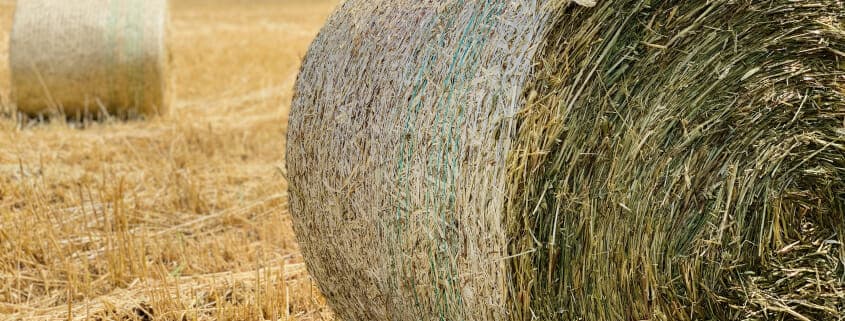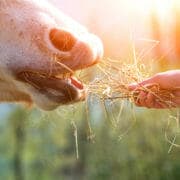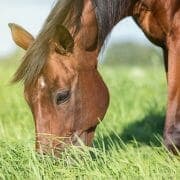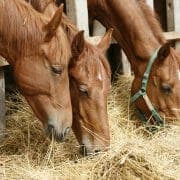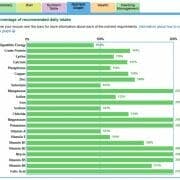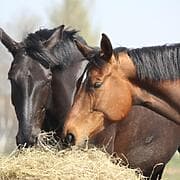Is Oaten Hay Bad for My Horse’s Teeth?
Oaten hay is commonly fed to horses. Recent research by Jackson et al (2018)1 suggests however that we should be cautious with oaten hay as it may be negatively affecting our horses’ dental health!
The Study on Oaten Hay and Horse’s Teeth
Dr Kirsten Jackson (https://dentalvet.com.au) and her co-researchers found in a study of 500 Western Australian horses, that oaten hay was significantly associated with an increased incidence of dental caries (tooth decay).
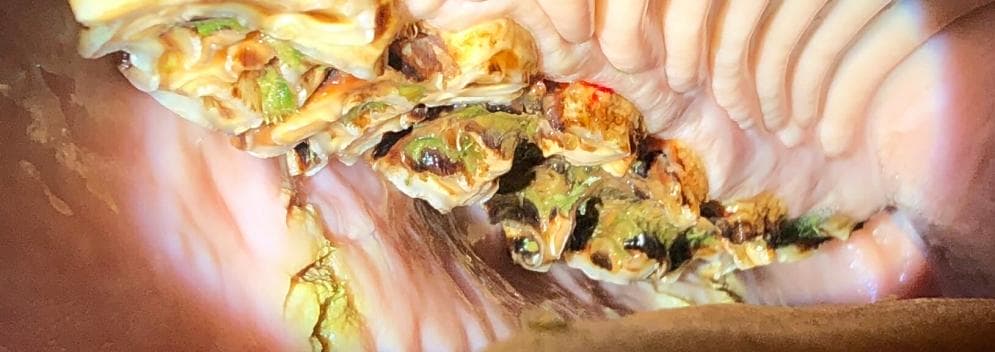
Image credit: Dr Kirsten Jackson (https://dentalvet.com.au)
How does Oaten Hay do this?
Dental caries form when bacteria in your horse’s mouth metabolise sugars in the hay/ feed and produce the by-product of acid. This acid demineralises the teeth causing decay which in horses generally means the outer layer (cementum) is stripped from the teeth.
Because oaten hay can be so high in water soluble carbohydrates (WSC; also loosely called ‘sugars’) the oaten hay feeds the oral bacteria, a lot… and then they produce a lot of acid… and the acid demineralizes (eats away) the hard part of the teeth.
It is thought that the near constant supply of sugars to the bacteria in the mouth when a horse has constant access to oaten hay, and therefore the prolonged periods of exposure of the teeth to the acids produced by the bacteria is what puts horses on oaten hay at higher risk of disease.
What about other types of hay or pasture?
Dr Jackson reports that in the same study it was found that a meadow hay based diet was protective. And horses with access to good quality grazing all year round were less likely to have peripheral caries than horses that had no access to grazing.
Other similarly high WSC hays like ryegrass hay and other cereal hays like barley and wheaten hay will potentially put horses at the same risk as oaten hay.
What can be done if my horse has dental caries?
The good news is that because a horse’s teeth are constantly erupting, and the acid produced when high WSC hay is fed only affects the part of the tooth that is physically exposed to it (so the tooth below the gumline remains unaffected), dental caries can be treated.
Jackson et al 2021 showed that when oaten hay was swapped for a lower WSC meadow hay, it allowed teeth to start to recover.
The authors note that full recovery generally takes around 2 years.

Image credit: Dr Kirsten Jackson (https://dentalvet.com.au)
Should oaten and other high WSC hays be completely avoided?
Not necessarily. It seems in this study that it was horses with free access to oaten hay that were most affected.
If you are in an area where other type of hay is difficult to source and using SOME oaten hay helps to get you through, then using some, mixed with a variety of other hays and/or access to pasture is potentially OK.
Also not all horses on oaten hay were affected so there is some individual variability in susceptibility to the caries so some horses can be ok on oaten but if your horse has caries it is best to avoid it. If your horse is on oaten hay and this can’t be avoided it is probably a good idea you have regular veterinary dental examinations conducted every 6 months.
If you are spoilt for choice with hay and can avoid oaten hay, you are probably best to avoid it completely… especially if you have a thoroughbred as they were also shown to be at higher risk!
References
1. Jackson, K., E. Kelty, and M. Tennant, Equine peripheral dental caries: An epidemiological survey assessing prevalence and possible risk factors in Western Australian horses. Equine Vet J 2018. 50(1):79-84.
2. Jackson, K., E. Kelty, and M. Tennant, Retrospective case review investigating the effect of replacing oaten hay with a non-cereal hay on equine peripheral caries in 42 cases. Equine Vet J 2021. 53(6):1105-1111.
Do you have a question or comment? Do you need help with feeding?
We would love to welcome you to our FeedXL Horse Nutrition Facebook Group. Ask questions and have them answered by PhD and Masters qualified equine nutritionists and spend time with like-minded horse owners. It’s free!
Click here to join the FeedXL Horse Nutrition Facebook Group

